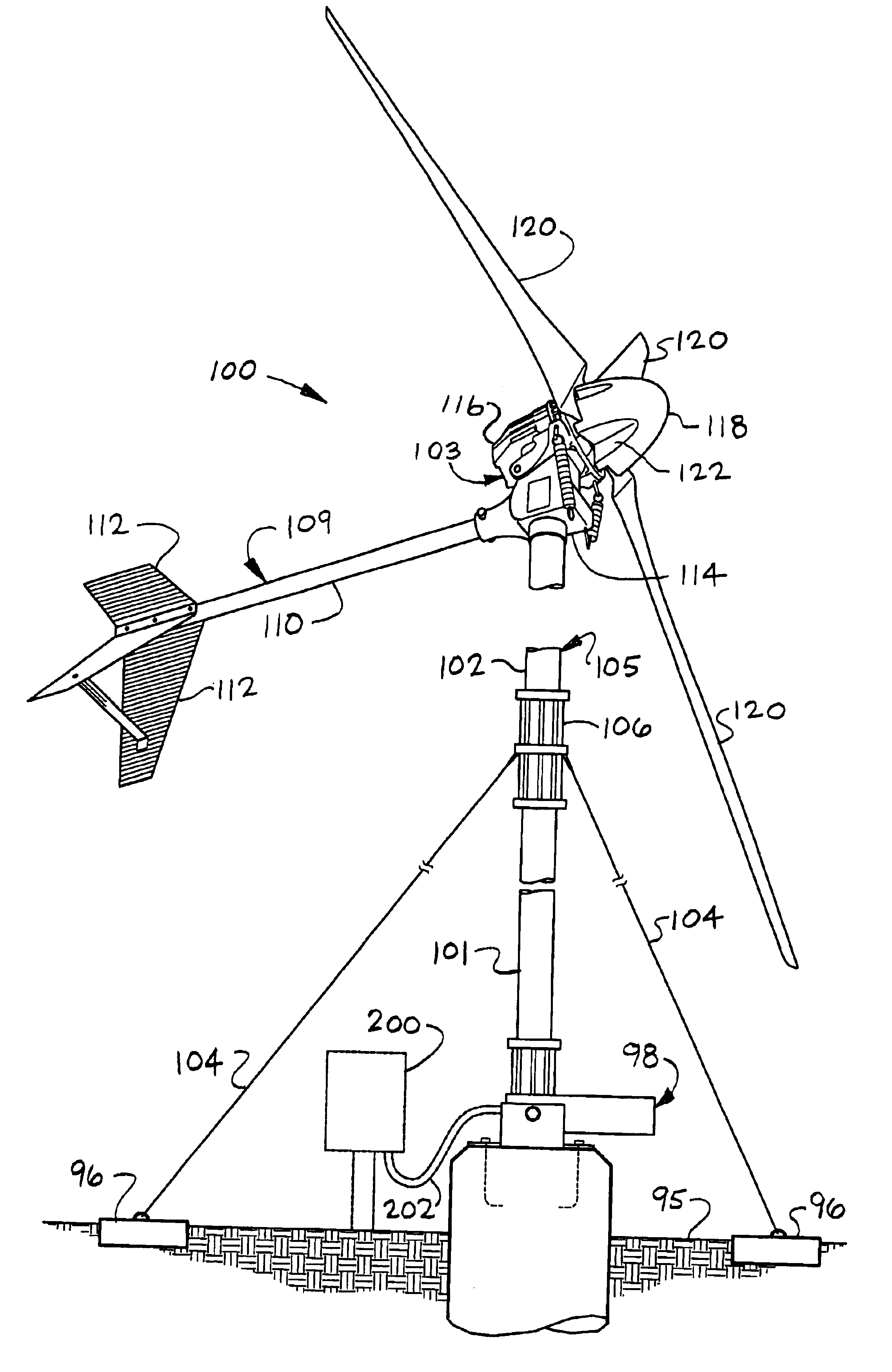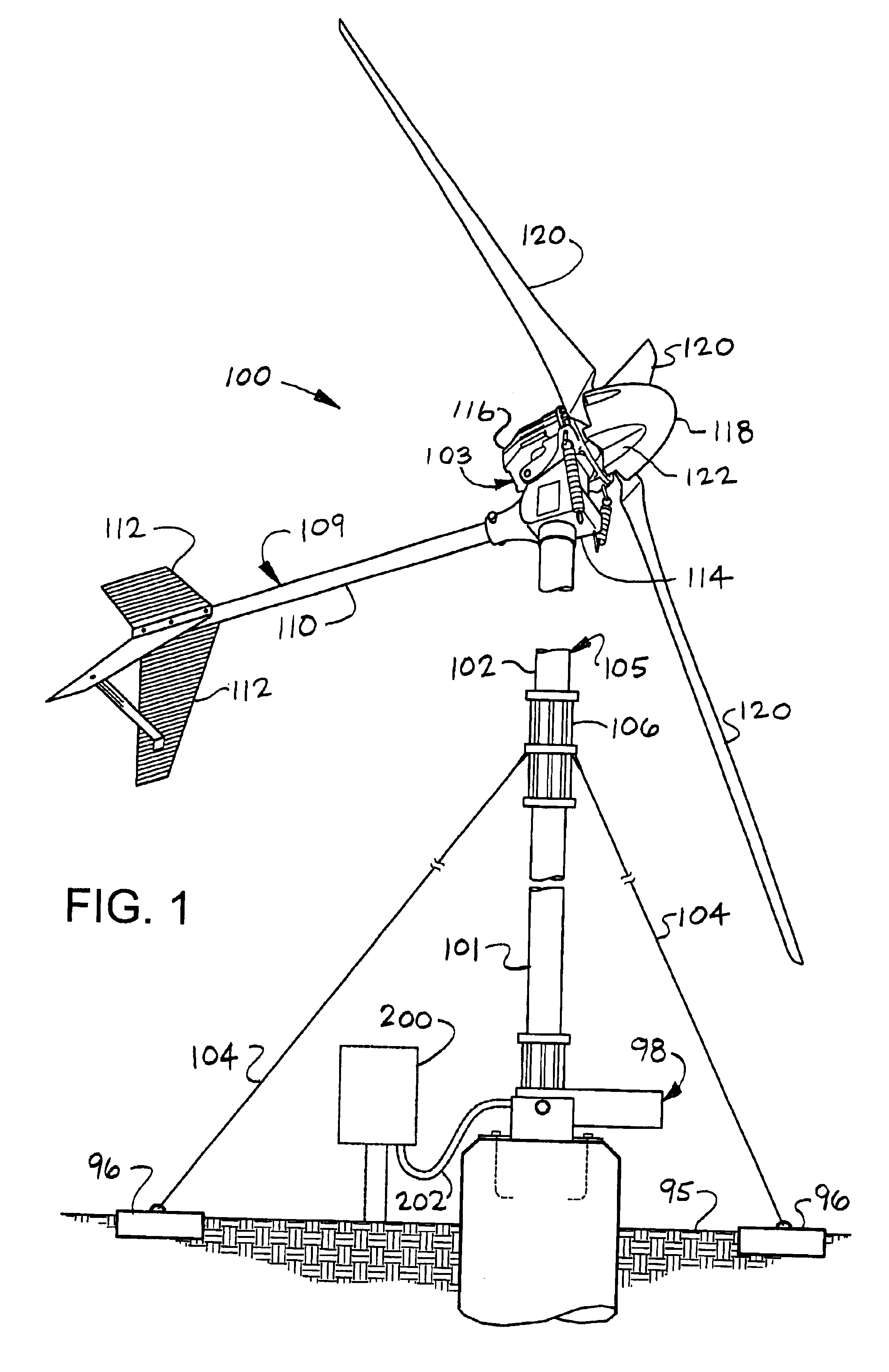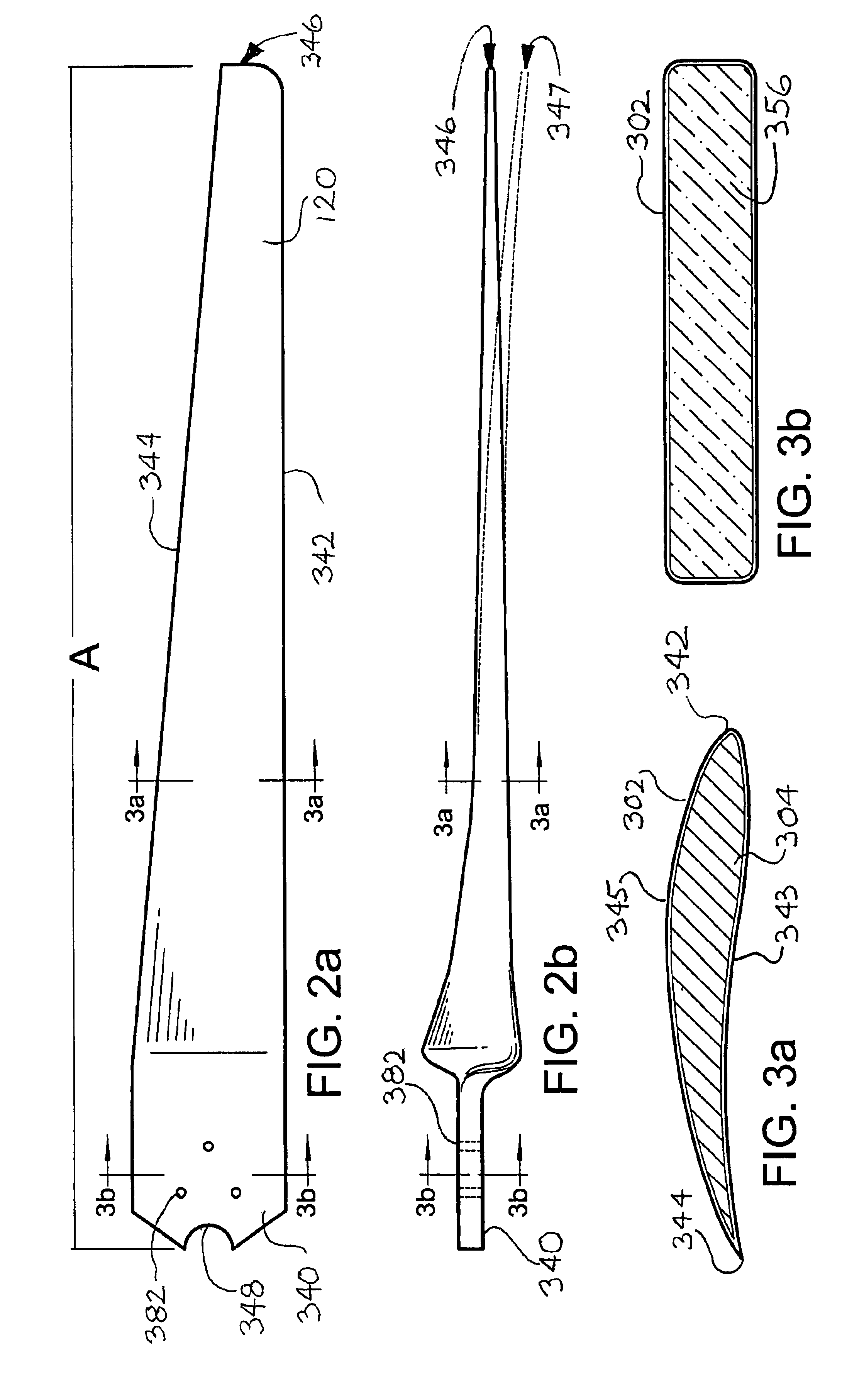Wind power system
a wind power system and wind turbine technology, applied in the direction of electric generator control, machines/engines, final product manufacturing, etc., can solve the problems of undesirable noise generated by traditional turbine blade assemblies, the cost of on-site wind power generation typically exceeds the cost of power derived from the most common traditional power generation sources, and the general application of small-scale wind power. achieve the effect of efficient cooling of the generator, simple erection and installation
- Summary
- Abstract
- Description
- Claims
- Application Information
AI Technical Summary
Benefits of technology
Problems solved by technology
Method used
Image
Examples
Embodiment Construction
Reference is now made to the drawings. FIG. 1 is a perspective view of a wind power system 100 according to a preferred embodiment of the present invention. An overview of this wind power system 100, various specific elements of which will be further described later in this specification, will illustrate, among other things, the various components which must be structured sufficiently to overcome any excess flutter, weight, lack of stiffness, or high inertial mass of the turbine blades.
Lower pole 101 (herein embodying a first elongated member) is preferably mounted on mast base 98 (also called "base plate), which is preferably fixed in the ground 95, as shown. Compression coupler(s) 106 preferably connect lower pole 101, upper pole 102 (herein embodying a second elongated member), and guy wire(s) 104 (herein embodying at least one lateral support), as shown. To fully form support tower 105, there preferably may be additional intermediary poles between upper pole 102 and lower pole 1...
PUM
| Property | Measurement | Unit |
|---|---|---|
| length | aaaaa | aaaaa |
| angle | aaaaa | aaaaa |
| temperature | aaaaa | aaaaa |
Abstract
Description
Claims
Application Information
 Login to View More
Login to View More - R&D
- Intellectual Property
- Life Sciences
- Materials
- Tech Scout
- Unparalleled Data Quality
- Higher Quality Content
- 60% Fewer Hallucinations
Browse by: Latest US Patents, China's latest patents, Technical Efficacy Thesaurus, Application Domain, Technology Topic, Popular Technical Reports.
© 2025 PatSnap. All rights reserved.Legal|Privacy policy|Modern Slavery Act Transparency Statement|Sitemap|About US| Contact US: help@patsnap.com



